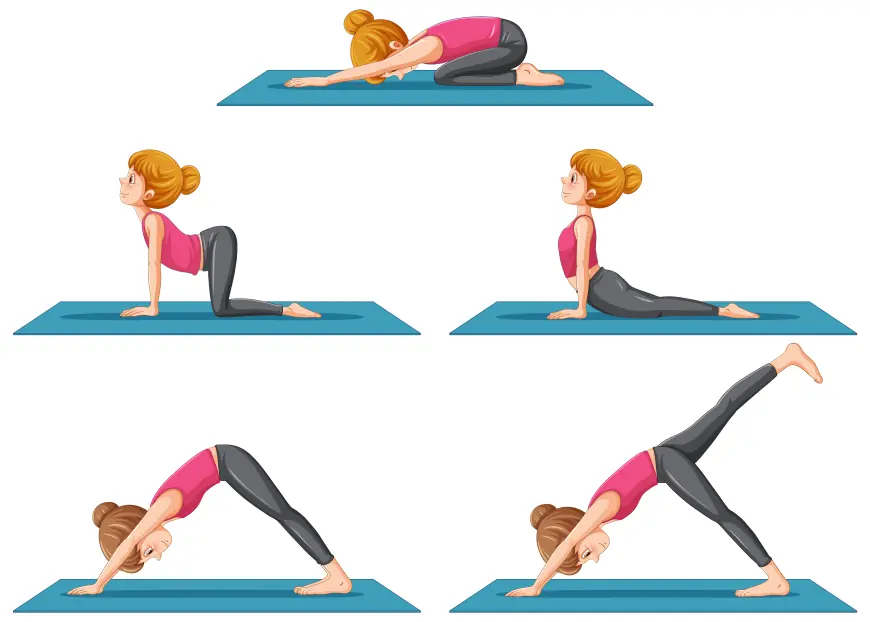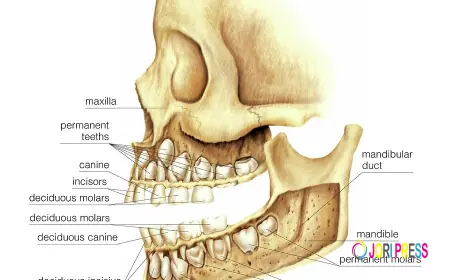What are the best Yoga Poses for Beginners to start with at home?
Yoga is a time-honored practice that offers a myriad of physical, mental, and emotional benefits, making it an ideal choice for individuals looking to enhance their well-being. For beginners, starting a yoga journey at home can be both accessible and empowering, allowing for a personalized experience without the pressures of a studio environment.

Yoga is a time-honored practice that offers a myriad of physical, mental, and emotional benefits, making it an ideal choice for individuals looking to enhance their well-being. For beginners, starting a yoga journey at home can be both accessible and empowering, allowing for a personalized experience without the pressures of a studio environment. In this article, we will explore the best yoga poses for beginners, along with essential tips and equipment to ensure a safe and enjoyable practice. Whether you’re looking to improve your flexibility, build strength, or find inner peace, these foundational poses will serve as the perfect starting point on your path to embracing yoga at home.
Introduction to Yoga for Beginners
What is Yoga?
Yoga is like that friend who helps you be your best self—calm, balanced, and flexible (both physically and mentally). Originating from ancient India, yoga is a holistic practice that combines physical postures, breathing techniques, and meditation to enhance your body, mind, and spirit. It literally means "to unite," bringing together the mind and body, like your favorite peanut butter and jelly sandwich—except this one won’t leave you feeling sticky!
Why Start Yoga at Home?
Let’s face it, not everyone has the time or inclination to trek to a yoga studio, especially when your couch beckons with the promise of binge-watching your favorite show. Starting yoga at home allows you to practice in your PJs (or, preferably, comfortable workout clothes) without the awkwardness of trying to contort yourself in public. Plus, it gives you the freedom to create a space that’s uniquely yours, whether that’s a peaceful corner of your living room or your backyard under the shade of a tree. Namaste to that!
Benefits of Practicing Yoga at Home
Physical Benefits
Let’s kick things off with the physical perks! Regular yoga practice can increase your flexibility, build strength, improve balance, and even help alleviate some of those pesky aches and pains. It’s like giving your body a gentle tune-up, making sure you can bend down to pick up the TV remote (priorities, people!) without pulling a muscle.
Mental and Emotional Benefits
Think of yoga as a mini-vacation for your mind. It’s a fabulous way to reduce stress, boost mood, and improve concentration—like having a therapist who also teaches you how to touch your toes. By focusing on your breath and being present, you can clear away the mental clutter and find a bit of peace amidst life’s chaos.
Convenience and Flexibility
One of the best parts of practicing yoga at home? You don’t have to rush out the door or fit a class schedule into your busy life. You can roll out your mat whenever it suits you—be it bright and early at dawn or late at night when the world is finally quiet. No need to worry about being late or showing up in mismatched socks; your living room is your studio, and you are the star of the show!
Essential Yoga Equipment for Beginners
Yoga Mat
First things first: a good yoga mat is your best buddy. It keeps you from slipping and sliding while you find your inner zen. Look for one with good grip and a little cushioning so your knees won’t feel like they’re getting pulverized during poses. Your mat is your sacred space—treat it well!
Comfortable Clothing
Yoga pants? Check. A cozy tank top? Double-check. Your choice of attire is crucial; you want to be comfortable and free to move without feeling like a sausage stuffed in a casing. Opt for breathable fabrics that won’t leave you feeling like you just sprinted a marathon (unless you’re doing that for your flow).
Optional Accessories (Blocks, Straps, etc.)
Now, while you can totally rock yoga without any extras, a few helpful tools can make your practice even better. Yoga blocks can help with balance and support, while straps assist in reaching those ambitious stretches. Think of them as the sidekicks to your superhero practice—they make all the difference!
Top Yoga Poses for Beginners
4.1 Mountain Pose (Tadasana)
Let’s start with the basics. Mountain Pose is the grounding force in your practice. Stand tall, feet together, shoulders relaxed. Engage your core and reach your arms overhead. You might feel like a majestic mountain—steady, strong, and ready to conquer your yoga session!
4.2 Downward Facing Dog (Adho Mukha Svanasana)
Now that you’ve grounded yourself, it’s time to flip it upside down—literally! Downward Facing Dog is a fabulous way to stretch your spine and legs. Start on your hands and knees, tuck your toes, lift your hips, and voila! You’re a dog—minus the barking.
4.3 Child's Pose (Balasana)
Feeling a bit tired? Child's Pose is your go-to for a gentle stretch and a breather. Kneel, sit back on your heels, and stretch your arms forward or rest them by your sides. This pose invites calmness and helps you regroup. It’s like your yoga nap time!
4.4 Cat-Cow Stretch (Marjaryasana-Bitilasana)
Get ready to channel your inner feline with the Cat-Cow Stretch! On all fours, arch your back like a scaredy cat (that’s the cat part), then lower your belly and lift your head (enter the majestic cow). This dynamic duo is fantastic for spinal flexibility and awakening your body.
4.5 Warrior I (Virabhadrasana I)
Ready to unleash your inner warrior? Warrior I is all about strength and focus. Start in a standing position, step back with one foot, bend the front knee, and rise with arms overhead. Feel empowered and ready to take on anything life throws your way (except a surprise math test—yikes!).
And there you have it! The perfect starting point for your at-home yoga journey. Remember, the most important thing is to have fun and enjoy the process. Happy stretching!## Tips for Practicing Yoga Safely at Home
Listening to Your Body
Yoga is all about tuning in, and that starts with listening to your body. If your hamstrings feel like they’re being pulled by a stubborn toddler, ease off! It’s important to differentiate between “discomfort” and “PAIN.” Discomfort means your muscles are working—like when your favorite stretchy pants are doing their job. Pain? That’s your body saying, “Uh-oh, please stop!” So, throughout your practice, check in with yourself—your body is your best yoga teacher.
Setting Up a Safe Practice Space
Your practice space doesn't need a secret garden or a mountain view (unless, of course, you have those just lying around). Find a quiet spot—bonus points if it’s away from the kitchen, because snacks are the ultimate distraction. Lay down a non-slip mat, clear away any coffee table obstacles (who knew they could be so dangerous?), and dim the lights if you want to set a serene vibe. It's your very own Zen den, so make it comfy!
Being Mindful of Your Limits
Ah, the age-old adage: “Know thyself.” When you practice yoga at home, it’s easy to feel overzealous. You might see some Instagram guru effortlessly doing the splits and think, “I can do that!” Spoiler alert: You probably can’t… yet! Remember, it’s all about progress, not perfection. If you can only touch your toes in the forward fold, that’s absolutely fine. Embrace where you are on your journey; the splits can wait!
Creating a Yoga Routine for Beginners
How to Structure Your Practice
When it comes to structuring a killer yoga routine, a little planning goes a long way. Start with a gentle warm-up (think cat-cow stretches to wake your spine), then move into a mix of basic poses like downward dog and warrior II. Aim to hold each pose for several breaths—enough to feel it working but not so long that you're daydreaming about lunch. End with a soothing cool-down and some time spent in savasana (aka lying like a starfish on your mat).
Duration and Frequency Recommendations
If you’re just starting out, aim for a practice of about 20 to 30 minutes, three to four times a week. Yes, it’s less than the time it takes to watch a few episodes of your favorite show, but your body will thank you! As you get comfortable, gradually increase the duration and frequency. Consistency is the name of the game, so find a schedule that fits your lifestyle—and that allows you to keep enough snacks on hand for post-yoga refueling.
Incorporating Breathing Techniques
Breathing is like the secret sauce of yoga—important and often overlooked! Start with a simple practice called ‘ujjayi’ breath, which involves breathing deeply in and out through your nose. Imagine you’re fogging up a mirror. This rhythmic breath will help ground you and enhance your practice. Try noticing your breath during poses, as it can deepen your connection to the movement. Just remember, you’re not trying to hyperventilate; this isn’t an audition for a drama series!
Conclusion: Embracing Your Yoga Journey
Staying Motivated and Consistent
Staying motivated can be the trickiest part of your yoga journey. To make it easier, consider setting small, achievable goals, like trying a new pose each week or practicing with a friend (who'll help keep you accountable and provide comedic relief if you fall over). Remember, results are not always visible, but they’re happening. Celebrate your victories—no matter how small—because each time you step on your mat, you’re investing in yourself.
Exploring Further Resources and Classes
As you progress, you might find that you want to explore more resources or classes. Apps, YouTube videos, or local studios can be great places to find new poses and guiding voices. Don’t be afraid to try different styles of yoga, from Hatha to Ashtanga to the ever-tempting “nap and stretch” variations. The yoga world is vast, and every new experience adds to your journey. So roll out that mat and go discover what fits you best—preferably without judgment or self-criticism, but lots of love and laughter!In conclusion, starting your yoga practice at home can be a fulfilling and transformative experience. By incorporating the recommended poses and following the tips provided, you can create a safe and enjoyable routine that suits your needs and lifestyle. Remember to listen to your body, be patient with yourself, and allow your practice to evolve over time. As you continue on your journey, you'll discover not only the physical benefits of yoga but also the mental clarity and emotional balance it can bring. Embrace this opportunity to nurture your mind, body, and spirit, and enjoy the journey ahead.
What's Your Reaction?
 Like
0
Like
0
 Dislike
0
Dislike
0
 Love
0
Love
0
 Funny
0
Funny
0
 Angry
0
Angry
0
 Sad
0
Sad
0
 Wow
0
Wow
0



















































